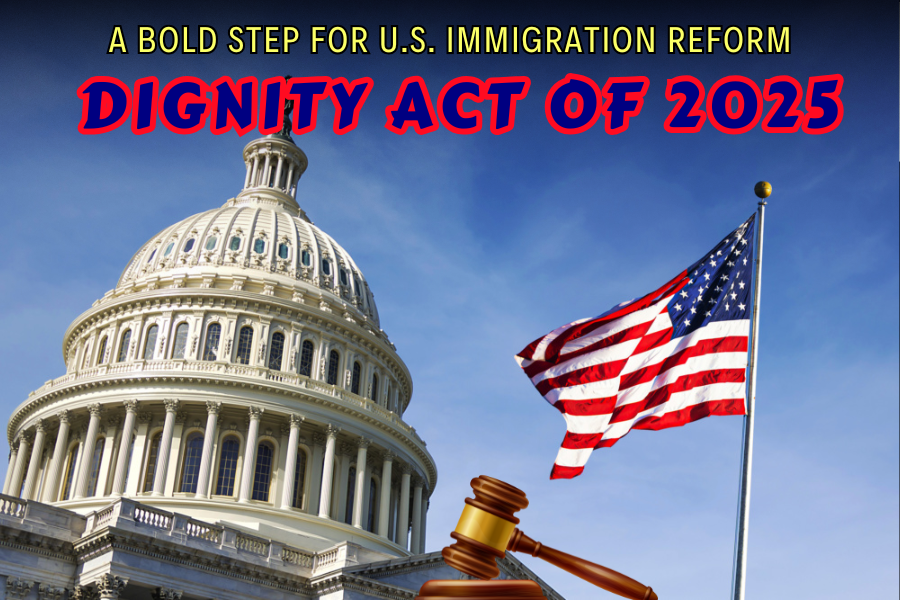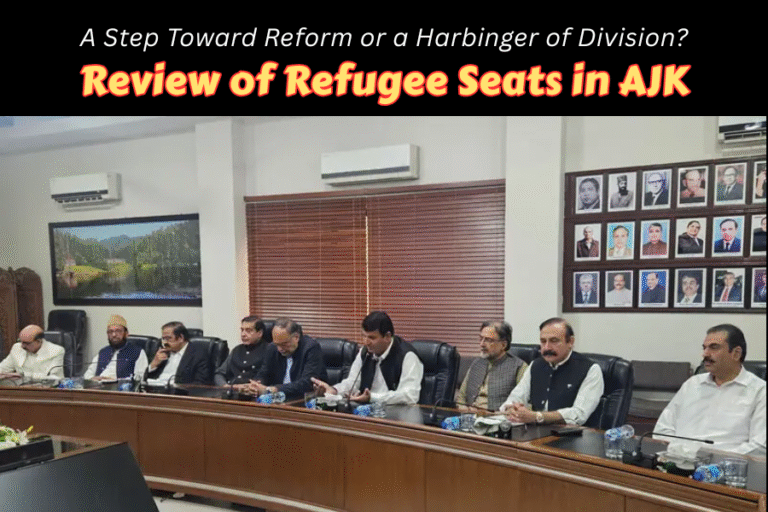(Ayesha Mohsin)
The United States grapples with a broken immigration system, leaving millions of undocumented immigrants in limbo. On 15 July 2025, Representatives Maria Elvira Salazar (R-FL) and Veronica Escobar (D-TX) introduced the Dignity Act of 2025 (H.R. 4393), a bipartisan effort to overhaul border security, legalize undocumented residents, and streamline legal immigration. Consequently, this legislation sparks hope for reform but faces hurdles in a polarized Congress. Unlike past proposals, it balances enforcement with compassion, offering a seven-year path to legal status. This article explores the Dignity Act, its seven-year rule, associated costs, voting timeline, and chances of passage, shedding light on its potential to reshape America’s immigration landscape.
WHAT IS THE DIGNITY ACT IN THE US?
The Dignity Act of 2025, formally “Dignity for Immigrants while Guarding our Nation to Ignite and Deliver the American Dream” (H.R. 4393), tackles border security, undocumented immigrants’ status, and legal immigration inefficiencies. Sponsored by Reps. Salazar and Escobar, alongside 20 bipartisan co-sponsors, it funds border infrastructure, mandates E-Verify, and reforms asylum processes. Moreover, it introduces the Dignity Program, granting seven-year deferred action with work and travel authorization for undocumented immigrants present before 31 December 2020. The Act incorporates the DREAM Act for young immigrants and the American Families United Act to prevent family separation, aiming to legalize up to 10.5 million people without offering citizenship. Polls show 80% of Americans support such earned legalization, reflecting public demand for reform.
THE SEVEN-YEAR RULE: PATH TO LEGAL STATUS
The Dignity Program establishes a seven-year rule for undocumented immigrants to earn legal status. Applicants must have resided in the U.S. continuously since 31 December 2020, pass criminal background checks, pay back taxes, and enroll in health coverage. Additionally, they must pay a $7,000 fine over seven years, deposited into the American Worker Fund to retrain U.S. workers. Participants check in with the Department of Homeland Security (DHS) every two years, proving good standing. Successful completion grants Dignity Status, a renewable five-year legal status with work and travel rights, but no direct path to citizenship. Unlike the 2023 version, the 2025 Act omits the Redemption Program for green cards, focusing on temporary status. This rule offers hope but demands significant compliance.
NEW IMMIGRATION LAW: KEY PROVISIONS OF THE DIGNITY ACT
The Dignity Act of 2025 isn’t law yet but proposes sweeping reforms. It allocates billions for border security, including drones, radar, and additional Customs and Border Protection (CBP) personnel. Furthermore, it mandates nationwide E-Verify to curb illegal hiring, replacing the I-9 system. Asylum reforms expedite claims within 45 days, using dual asylum officers to streamline decisions, with complex cases referred to immigration judges. The Act raises per-country green card caps from 7% to 15%, reducing backlogs for countries like India and China. For Documented Dreamers, it offers permanent residency for those with 10 years of lawful presence. These provisions aim to balance enforcement with humane solutions, addressing labour shortages and family unity without taxpayer funding.
COST TO IMMIGRATE UNDER THE DIGNITY ACT
Immigrating legally via the Dignity Act involves significant costs. The Dignity Program requires a $7,000 fine, paid over seven years, with an initial $1,000 application fee and $6,000 in instalments ($1,000 per biennial check-in). For green card pathways, such as for long-waiting applicants (10+ years), a $20,000 premium processing fee applies. Dreamers and Temporary Protected Status (TPS) holders face fees up to $1,140 for permanent residency applications. These costs, funded by applicants, ensure no taxpayer burden. However, critics argue the $7,000 fine burdens low-income immigrants, while supporters note it funds workforce training. Compared to current immigration fees (e.g., $1,225 for I-485 adjustment), these costs are substantial but structured to incentivize compliance and economic contribution.
WHEN WILL THE DIGNITY ACT BE VOTED ON?
As of 24 July 2025, the Dignity Act (H.R. 4393) awaits committee review in the House of Representatives, introduced just nine days ago. The legislative process involves referral to the House Judiciary Committee, potential amendments, and a floor vote if approved. No specific voting date is confirmed, but bipartisan support from 20 co-sponsors, including Reps. Mike Lawler (R-NY) and Hillary Scholten (D-MI), suggests urgency. Given the 118th Congress’s schedule, a vote could occur by late 2025 or early 2026, depending on committee progress and leadership prioritization. However, competing legislation, like the enforcement-focused One Big Beautiful Bill Act, may delay proceedings. Public advocacy, as urged by Rep. Escobar on X, could expedite scheduling.
CHANCES OF PASSING: OPPORTUNITIES AND OBSTACLES
The Dignity Act’s passage faces an uphill battle in a GOP-controlled Congress under President Trump’s enforcement-heavy agenda. Its bipartisan support, endorsed by the Problem Solvers Caucus and backed by 80% of Americans per polls, bolsters its chances. Yet, opposition from hardline Republicans, as seen in X posts criticizing it as “mass amnesty” (@gatewaypundit), and competing bills like H.R. 1, which prioritizes deportations, pose significant hurdles. Immigration attorney Rosanna Berardi notes its conflict with Trump’s policies, reducing likelihood in the Senate. Nevertheless, its self-funded model and focus on border security appeal to moderates. A 40–60% passage probability hinges on compromise and public pressure. Continued advocacy, as Rep. Salazar urges, could sway undecided lawmakers.
BROADER IMPLICATIONS: BALANCING SECURITY AND COMPASSION
The Dignity Act addresses root causes of migration through a four-year Central America strategy, tackling poverty and violence. It contrasts with Trump’s mass deportation policies, which sparked protests in 2025. By offering legal status without citizenship, it avoids “amnesty” accusations while supporting economic needs, as Rep. Adam Gray notes: “The Central Valley’s economy relies on immigrants.” Critics, however, question its $7,000 fine as prohibitive. Supporters, including World Relief, praise its humane approach, rooted in biblical principles of dignity. If passed, it could legalize millions, reduce backlogs, and strengthen borders, but its success depends on navigating political divides.
SUMMARY
The Dignity Act of 2025 (H.R. 4393) offers a bipartisan solution to U.S. immigration woes, strengthening borders, legalizing 10.5 million undocumented immigrants via a seven-year Dignity Program, and reforming visa backlogs. Applicants pay $7,000 in fines, ensuring no taxpayer cost, while Dreamers and TPS holders gain permanent residency paths. Introduced on 15 July 2025, it awaits a House vote, potentially by late 2025, but faces a 40–60% passage chance amid GOP opposition. Balancing enforcement with compassion, it’s a bold step toward fixing a broken system, contingent on public and political support.







